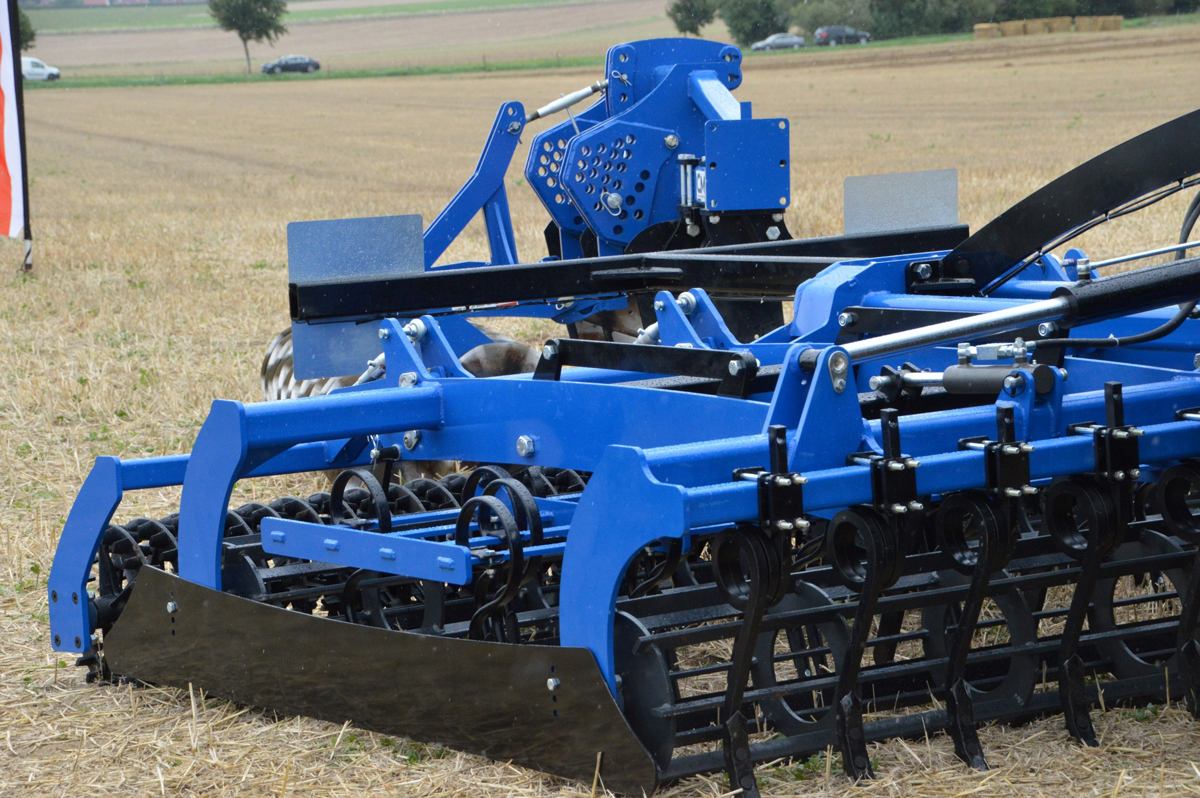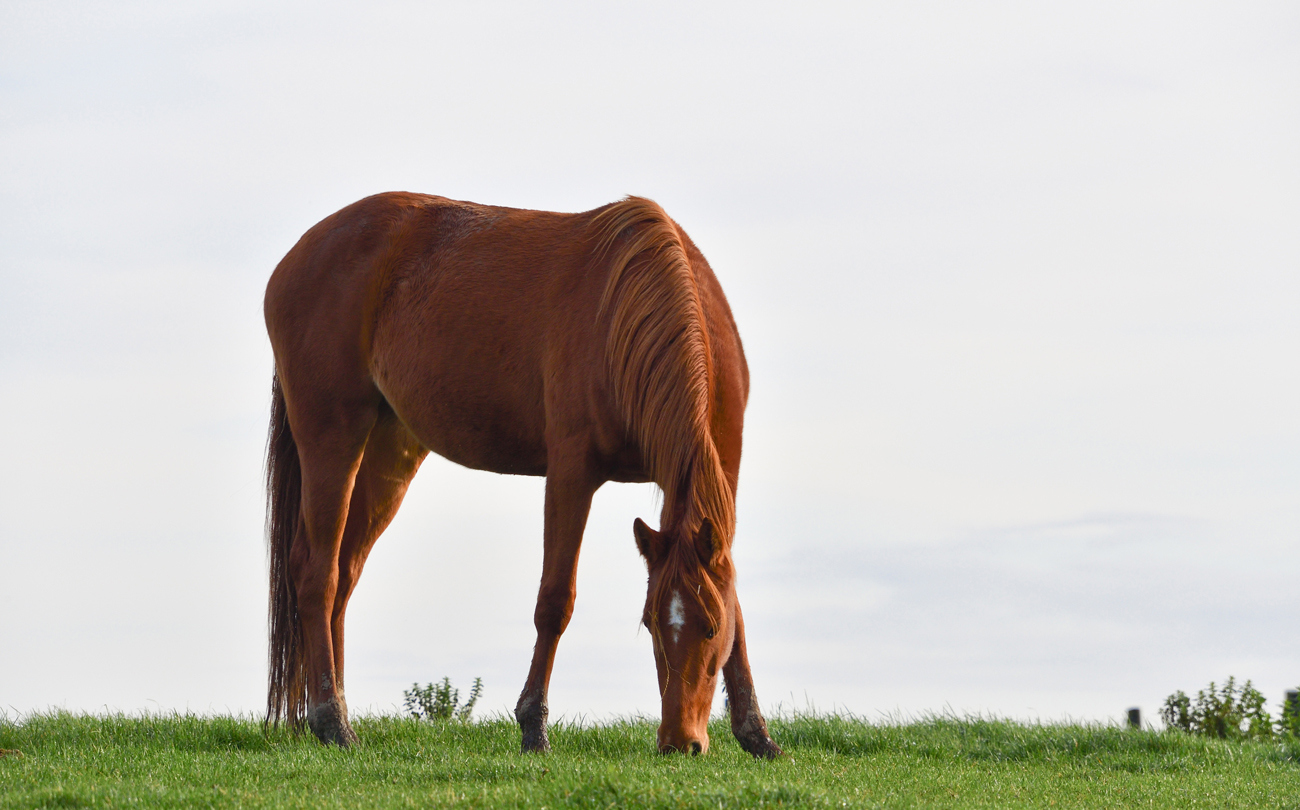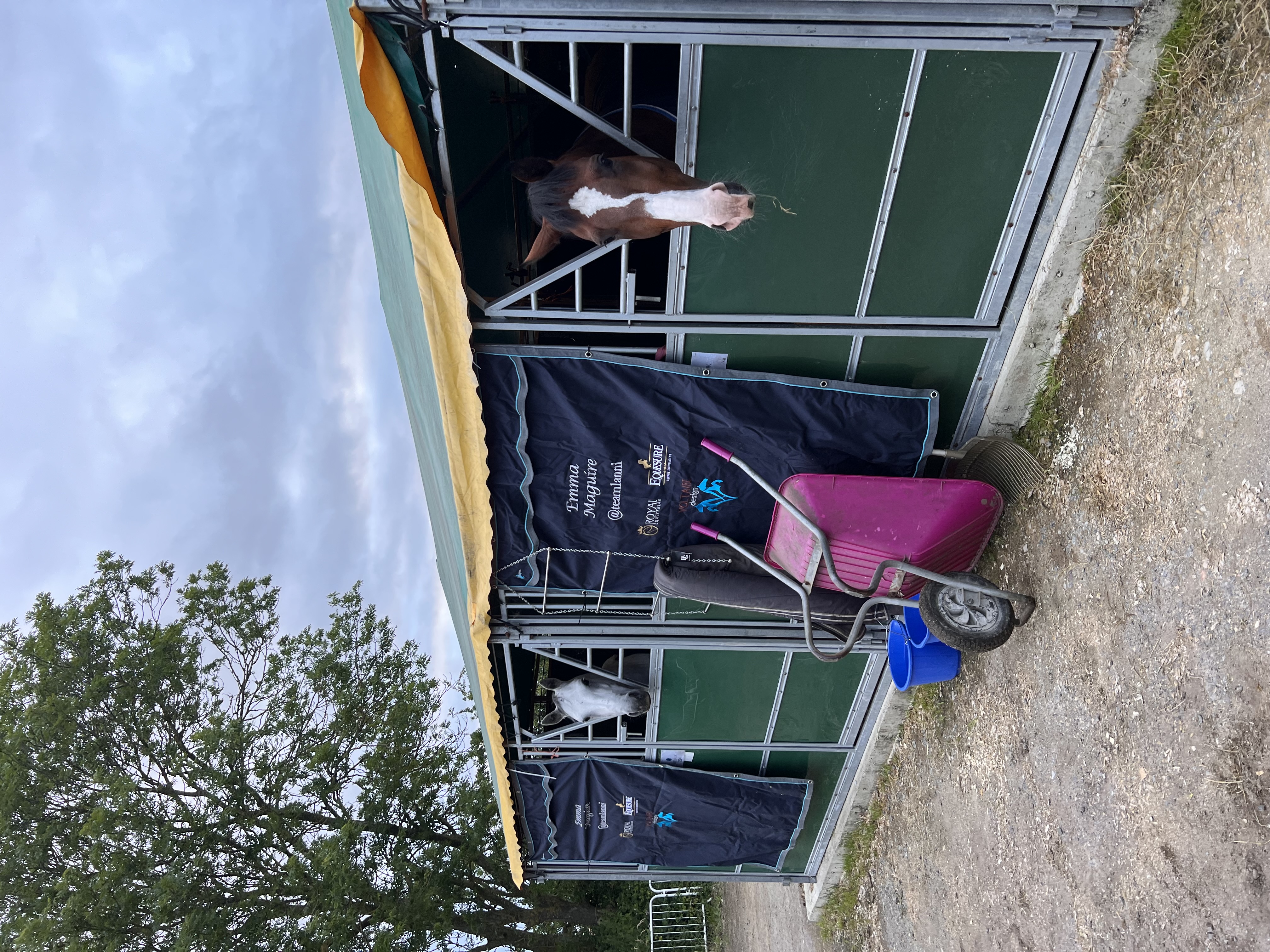Being turned out onto grass for natural grazing and some socialising with their equine friends is great for your horse’s physical and mental wellbeing. However, not all fields are the same and there can be vast differences between a well-maintained paddock and one that has been left to deteriorate. Differences that can lead to a big change in a horse’s health.
From weed management to rotational grazing, the team at Equesure has put together these 10 top tips to keep your horse’s grazing in perfect order.
Moving your horse to a new and better grazing is just one of the many reasons you might need to transport them in a trailer.
Making sure you have the right insurance for a horse trailer in place before you do is essential to protect you against the financial fallout of an accident.
Let’s get back to those tips...
-
Get a cross-grazing companion
While this might not suit all horses, adding non-selective grazers like sheep, goats or even cattle to the field can benefit the quality of grass.
They do this by grazing some of the rougher untouched areas, levelling out damage from your horse’s hooves and keeping down the amount of sugary grass available in the spring and summer.
This could be a true life-saver if your horse is susceptible to laminitis. Some horses also love the companionship these animals can provide. If you have more than one equine, remember that the BHS recommends 1 to 1.5 acres of permanent grazing land per horse.

-
Keep up with the poo picking
Controlling parasite levels in the pasture is an important part of grazing management and is another benefit of cross-grazing. But if you really want to reduce harmful parasites and prevent unpleasant no-go areas forming then you need to do a daily poo pick throughout the field and under any shelter. Who said horse ownership isn’t glamorous!
-
Watch out for weeds and other poisonous interlopers
Poisonous plants, whether among the grass or in hedgerows, can be a serious hazard to your equine friend’s health and need to be removed regularly. Blue Cross has a handy guide to some of the most common plants horses need to avoid. From ragwort and foxglove to acorns and sycamore seeds it’s a good idea to be aware of local plant life.
-
Terrific topping for a thicker turf
To encourage a good thick grass turf that will help keep weeds away it’s a good idea to remove the tops of unpalatable long, rough grasses that have gone to seed. This process is called topping and is best done once a year during mid-spring through mid-summer.
Horses shouldn’t be turned out onto topped grass until the trimmings are removed or have dried up. Ragwort and foxglove should be removed beforehand as horses are more likely to eat them when dried.
-
Consider harrowing
Using a harrow on your pasture is a traditional way to break up and smooth out the surface, remove dead grass and pull out lightly rooted weeds.
However, to be effective you need to do it when the ground isn’t too wet or too dry. After harrowing you want to leave a minimum of six weeks before turning your horses out on to it.
Be mindful that unless you’ve done a decent job of poo picking then you might also spread harmful parasites around the field.

-
Rock some rolling
Similar to harrowing, timing is crucial when it comes to using a heavy roller on pasture. Rolling can be a great way to even out rutted and poached areas. However, if the ground is too wet when you do it, you’ll end up damaging drainage and grass growth.
-
Re-seed tired areas
Depending on how many horses you have grazing and the quality of the soil it can be all too easy for areas to become bare and in need of reseeding – particularly after winter. However, this does take a bit of forethought as horses will need to be moved to a different area while the new grass is growing.
Also, choosing the right seed mix for your horse isn’t always straightforward as you’ll want a good mix of grasses with the right nutritional content.
-
Protect poached areas
Particularly during the winter, areas around gateways or water troughs can sometimes get poached and boggy. If you want to avoid causing further harm then consider using grass mats or hard-standing to guard against damage.
-
Test and fertilise if necessary
Staying aware of the nutrient content of pastureland soil is a key way to maintain good grass growth and the best nutrition for your horse. There can be many reasons why an area of grass has suffered nutrition loss but regular soil testing during the autumn or spring will warn you if this has happened.
If it has then you might need to add fertilizers to the soil to provide the essential nutrients for healthy grass growth. However, over fertilising can also cause a problem as excessive growth of lush grass might be unsuitable for your horse.
As the British Horse Society (BHS) notes, if you are adding fertilizers then there are strict times when this is allowed. The BHS has more details on its website.

-
Remember rest and rotation
A popular way to manage grazing, if you have the acreage, is to use rotational grazing. Similar to crop rotation this allows areas of pasture to have periods of rest and regrowth following grazing.
If you decide that you need to move your horse to a better field then you might need to transport them in a horse trailer. Before loading up, check your horse trailer insurance is up to date and suitable for the journey you’re making. Remember that the team at Equesure can also arrange breakdown cover for your vehicle and trailer if needed.
Protecting your horse while it’s on the move
If you’re moving your horse from field to field, the specialist team at Equesure are always on hand to find the right horse trailer insurance cover for your needs.
With over 60 years of experience in the equine insurance market, we can find cover for all makes and models of trailers. From Ifor Williams to Pegasus trailers, we’ve got you covered.
Call today for a horse trailer insurance quote.
Policy benefits and features offered may very between insurance schemes or cover selected and are subject to underwriting criteria. Information contained within this article is accurate at the time of publishing but may be subject to change.






